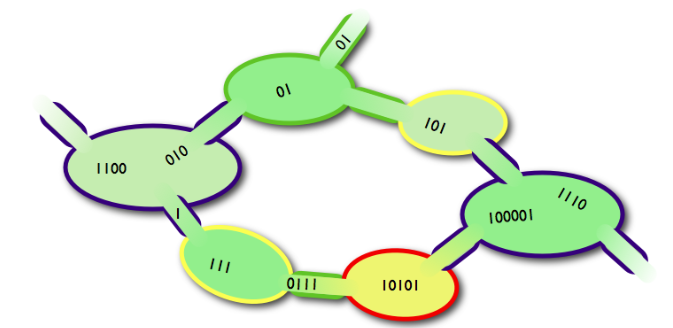Team:Paris Bettencourt/Potential Application
From 2011.igem.org

Potential applications of communication through nanotubes
There are many potential applications of the nanotube communication. Our project is the very beginning of the investigation, but such a mechanism opens non-foreseen opportunities in biotechnology and drug conception.We propose very new and innovative applications in the field of metabolism engineering, amorphous computing and drug design.
Metabolic engineering
Implementing a new metabolic pathway into a cell often leads to rejection of the pathway due to the toxicity of the compounds and the over-expression of the metabolic enzymes. This takes a heavy tool on the host cell.
In order to address this issue, several labs are working on creating "bacteria consortia". In these consortia, each species or strain present is taking care of one step of the reaction. This approach presents the problem that all compounds have to pass through the membrane efficiently. Other scientists, linking artificial giant vesicles with artificial metal tubes to build compartimented micro-factories. The problem is that this is no living organism, and the enzymes have to be encapsulated. Also, it is hard to build and unstable.
Using nanotubes between cells would be a great progress in the micro-factory metabolic engineering. Connecting the cells together through nanotubes and having each cell carrying one step of the reaction would combine the advantages of the two previously mentioned techniques without their drawbacks.
A lot of work has to be done before such control is reached but our iGEM project can be a significant step in this direction.
Amorphous computing
Amorphous computing refers to computational systems that use very large numbers of identical, parallel processors with each having limited computational ability and local interactions. The term amorphous computing was coined at MIT in 1996 (ref: Amorphous Computing Manifesto by Abelson, Knight, Sussman, et al). Examples of naturally occurring amorphous computations can be found in many fields such as: developmental biology (the development of multicellular organisms from a single cell), molecular biology (the organization of sub-cellular compartments and intra-cell signaling), neural networks, and chemical engineering (non-equilibrium systems).
The nanotube network described in the article published by Dubey and Ben-Yehuda [1] is a great opportunity for amorphous computing in cells. This is a non-specific communication channel where cells can exchange proteins only with their close neighbours. In our case, instead of having a broadcast communication system (such as quorum sensing), nanotubes can be compared to a peer-to-peer network. Nanotube will simplify communication between cells by reducing possible information loss and a good way to know the distance between cells (which is a great asset in amorphous computing).
With this network, we can harness the computing power of an entire colony but still follow (through fluorescence for instance) the behaviour of individual cells. The non-specificity of the nanotubes is an important asset for such an application. The molecules that can be used for information transfer will not be limited to a small number like in quorum sensing. The fact that molecules are not released in the medium is also a great advantage.
This would require a fine tuning of the network and the test of several molecules diffusing through it. Our designs are perhaps the first emitters and amplifiers that will be required for such an application.
Medical application
The nanotube communication if efficient, is one potential mechanism that would allow a population of infectious bacteria to survive an antibiotic treatment. Indeed, if a resistance appears, such mechanism helps the bacteria to resist together even before plasmid is transferred from one cell to another.
A treatment blocking the formation of the nanotubes in gram positive bacteria would be an efficient drug to prevent antibiotic resistance apparition in case of long infection period. Drugs with such capabilities can be given in complement to standard antibiotics.
For the moment, the genes at the origin of the nanotube formation are unknown. There is a lot of fundamental research ahead to find the proteins governing this process.
 "
"



